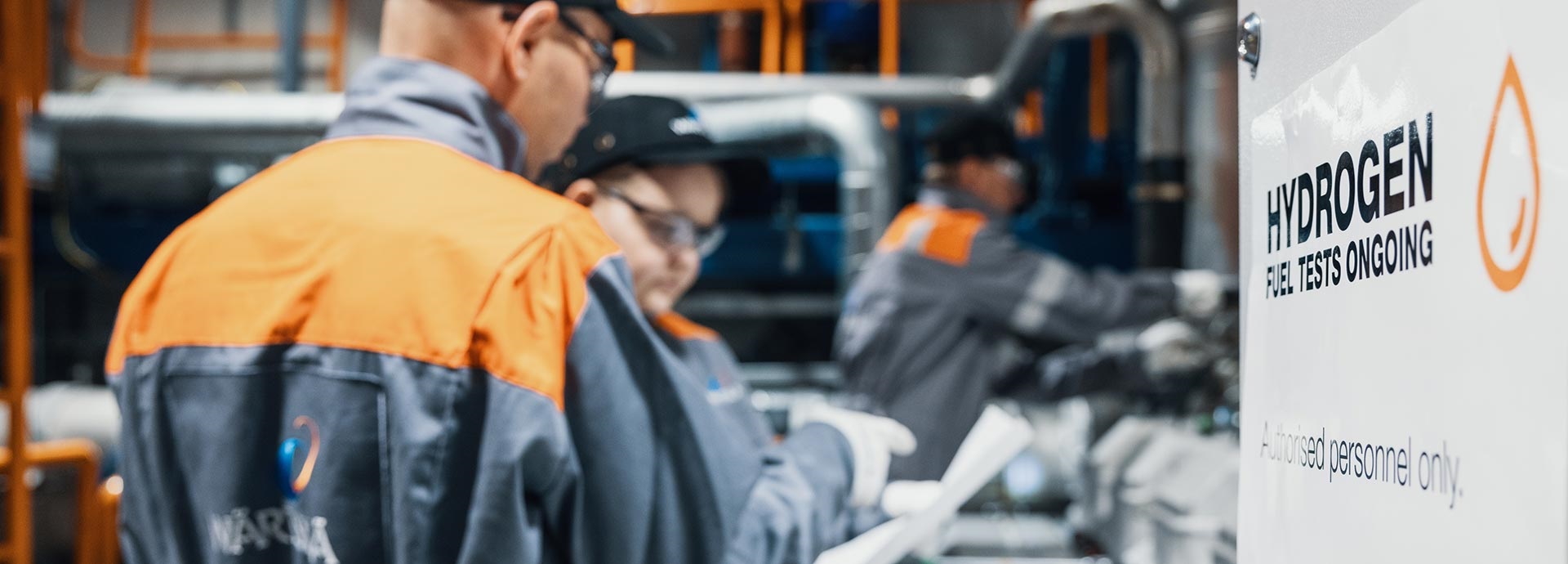

Green hydrogen will be essential in enabling decarbonisation – but it is only one piece of the puzzle. Director of Sustainable Fuels and Environment at Wärtsilä Energy Reetta Kaila is eager to see what the future will bring.
Reetta Kaila describes her career path as delightfully versatile. She is a Doctor of Engineering in Industrial Chemistry, and over the years, she has researched for example biocomponent development, and the reuse of waste streams from the pulp and paper industry. At Wärtsilä, Kaila has held several positions, including working as an expert sales representative for marine liquid natural gas.
“There is a common thread in all the jobs I’ve had: a green focus. Curiosity has also fuelled my entire career. Finding answers in collaboration with amazing people has always driven me forward,” she says.
“My current position brings together all the experience and training I have gained over the years. I am in charge of investigating a wide range of sustainable fuels for engines, as well as emission abatement technologies to comply with regulations of local and global emissions. I feel fortunate to be working with such fascinating issues,” Kaila describes.
Intriguing prospects for decarbonisation
Kaila emphasises that a variety of sustainable fuels – such as green hydrogen, biofuels and fuel blends, ammonia, and methanol – will be needed to decarbonise not only the energy sector, but shipping, transport, and industry as well.
Many of these sustainable fuels will be very localised, serving power plants within fairly short distances of the fuel production. Currently, Kaila is especially interested in bio-to-X fuels and biogas, which present intriguing prospects for decarbonisation in many industries.
“Take biogas, for example. It can be produced from food waste, agricultural products, animal manure, industrial by-products, or for example wastewater biosolids. We already have the necessary infrastructure to utilise it, and there is no shortage of biomass to produce biogas. In almost any given area, the need for energy correlates with the amount of waste produced,” she says.
Bio-to-X fuels and biogas are carbon neutral – or even carbon negative.
Kaila also reminds that if biomass is not utilised to create bio-to-X fuels or biogas, the biomass will rot in nature or landfills and release methane, which would have a stronger greenhouse effect than the CO2 emitted in combustion.
“Consequently bio-to-X fuels and biogas are carbon neutral – or even carbon negative,” she points out.
Kaila’s doctoral dissertation dealt with hydrogen production, and she remains fascinated by green hydrogen’s possibilities. She notes that while green hydrogen is a promising candidate for power plants, it is not an ideal sustainable fuel solution for all industries. In the shipping industry, for example, green hydrogen simply takes up too much space.
“For LPG carriers, ammonia has several advantages over hydrogen, like its greater energy density and the fact that it does not need to be stored under compression, or at very low temperatures. For deep-sea shipping, methanol is a prime candidate,” she says.
Looking at the big picture
Kaila reminds that while renewables like solar and wind will naturally take central stage in decarbonisation efforts, the role of sustainable fuels is also critical.
“Power systems cannot run on solar and wind power alone. Engine power plants and energy storage are needed to balance the intermittent nature of renewable power sources,” she points out.
She also notes that when researching sustainable fuels, it is vital to look at emissions in the entire value chain:
“It takes vigorous testing to find the best solutions for different industries. Green hydrogen and ammonia are carbon free, but their combustion can create nitrous oxide or other greenhouse gases. Although carbon dioxide is the primary greenhouse gas emitted through human activities, it is not the only one we have to worry about.”
“Finding the best sustainable fuels to cut greenhouse emissions always requires looking at the big picture – including the fuel’s extraction, production, handling, and transportation – and finding a balance between both local and global emissions,” Kaila affirms.
This spring, Wärtsilä published a paper in which Kaila and her colleagues explore various options for energy’s decarbonised future and shed light on Wärtsilä's continuous research on sustainable fuels and engine technology.
The paper also includes case examples of selected ongoing pilot projects at Wärtsilä, such as creating a maritime engine that runs on ammonia, and a test platform for hydrogen blending.
“We had a marvellous time writing the paper. I hope it will showcase the wide scope of sustainable fuels that we are testing; explain how they can help advance decarbonisation – and give a glimpse of the fascinating research that we conduct here at Wärtsilä,” Kaila says.
Get fascinated about the array of sustainable fuels in the paper.



